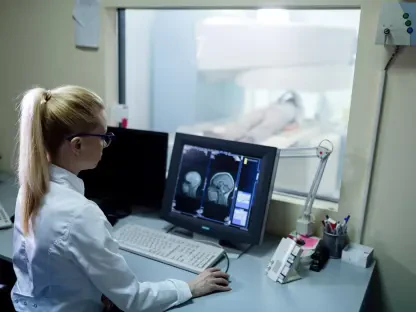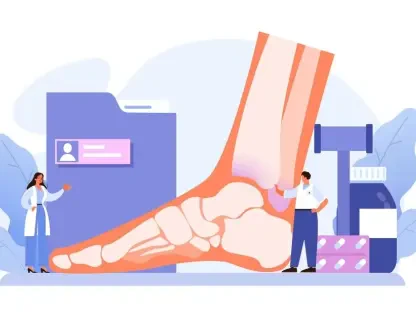What happens when thousands of patients struggle to transition from hospital to home without the right support? In the Midwest, where rural and urban healthcare challenges collide, a groundbreaking solution has emerged. Quipt Home Medical, a Cincinnati-based company, has forged a joint venture with Hart Medical Equipment, announced on August 12, that promises to revolutionize patient care across Michigan and northern Ohio. This isn’t just a business deal—it’s a lifeline for those navigating the critical post-hospital phase, ensuring access to vital equipment and support at a pivotal moment.
A Pioneering Alliance for Regional Care
At the heart of this partnership lies a shared vision to bridge gaps in healthcare delivery. By joining forces with Hart Medical Equipment and integrating with major health systems like Henry Ford Health and McLaren Health Care, Quipt is expanding its reach to serve over 67,000 patients monthly across 19 hospitals. This alliance, solidified by Quipt’s acquisition of a 60% stake in Hart for $17-18 million, marks a significant step toward seamless care transitions in a region often plagued by access disparities.
The strategic importance of this move cannot be overstated. With Hart’s 29 branch locations already embedded in local communities, the partnership creates a robust network that connects hospital discharge processes directly with durable medical equipment (DME) services. It’s a model designed to ensure that patients don’t fall through the cracks when they leave medical facilities, addressing a long-standing issue in Midwest healthcare systems.
Why This Matters for Patients and Providers
The Midwest’s healthcare landscape is a complex puzzle, with rural areas lacking proximity to services and urban centers grappling with high demand. Quipt’s collaboration with Hart tackles these challenges by embedding DME provision into the hospital discharge workflow. This means patients can access critical tools like oxygen concentrators or mobility aids the moment they head home, reducing delays that often lead to complications or readmissions.
Beyond immediate patient benefits, providers stand to gain from this streamlined approach. Hospitals partnered with Quipt and Hart can now offload the logistical burden of equipment coordination, focusing instead on clinical care. Industry data supports this shift—studies indicate that integrated DME services can cut hospital readmission rates by up to 20%, a statistic that underscores the value of this joint venture for both cost efficiency and patient outcomes.
Unpacking the Strategic Impact
This partnership delivers a multifaceted boost to Quipt’s operations and the broader healthcare ecosystem. Financially, the deal propels Quipt’s annualized revenue to $300 million, with Hart contributing $60 million and $7 million in adjusted EBITDA. Such growth cements Quipt’s dominance in Michigan and northern Ohio, markets ripe for DME expansion due to their sizable populations and healthcare needs.
Operationally, the integration with leading health systems creates a direct line to patients at critical junctures. By aligning with hospital networks, Quipt ensures equipment delivery is not an afterthought but a core part of care planning. Additionally, the company expects to harmonize Hart’s EBITDA margins with its own within three quarters, signaling a focus on efficiency that could serve as a blueprint for future endeavors across the country.
Hearing from Leaders on the Ground
Greg Crawford, CEO and Chairman of Quipt, encapsulates the transformative potential of this deal: “Hart’s deep ties with world-class health systems like Henry Ford Health bring unparalleled depth to our mission.” His words highlight how embedding Quipt within hospital ecosystems creates a smoother path for patients transitioning to home care. This isn’t mere rhetoric—real-world examples from similar partnerships show patients reporting higher satisfaction when equipment arrives promptly upon discharge.
Industry perspectives further validate this approach. Experts note that collaborations between DME providers and health systems often lead to better care continuity, with data suggesting a 15% improvement in patient adherence to post-hospital plans when equipment access is immediate. This joint venture aims to replicate such success on a larger scale, prioritizing the human element in healthcare delivery.
Real-World Changes in Care Delivery
For Midwest hospitals and patients, the practical effects of this partnership are already taking shape. Discharge processes are becoming more fluid, as facilities can rely on Quipt and Hart to handle DME needs without delay. This integration allows medical staff to focus on treatment while ensuring patients leave with the right tools, minimizing risks during vulnerable transitions.
Access is another key win, especially for those in remote areas. With Hart’s extensive branch network, individuals in both rural and urban settings can connect with local outlets for personalized support, whether they need a wheelchair or respiratory aid. Moreover, this joint venture sets a precedent for the industry, offering a replicable model that other DME providers and health systems might adopt to enhance their own care frameworks over the coming years, from 2025 to 2027.
As this partnership unfolded, it became clear that Quipt’s joint venture with Hart Medical Equipment had reshaped Midwest healthcare in profound ways. The collaboration not only strengthened patient support during critical transitions but also built a scalable framework for operational success. Looking ahead, stakeholders could focus on expanding such models to other regions, prioritizing data-driven adjustments to meet diverse community needs. Further investment in technology to track equipment delivery and patient outcomes might enhance these efforts, ensuring that the legacy of this deal continues to prioritize care over mere logistics.









